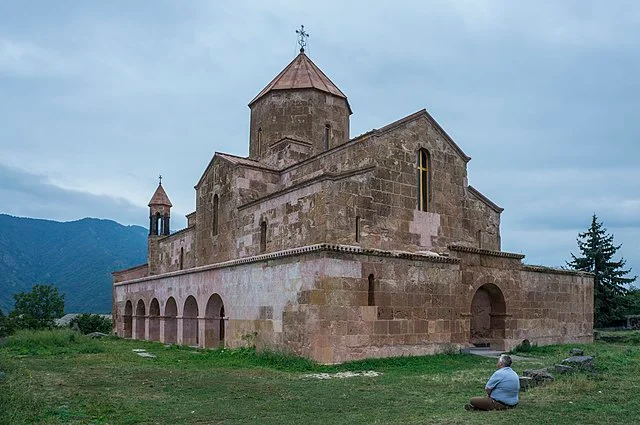The Odzun Monument is a significant 7th-century Armenian basilica and historical landmark located in the village of Odzun, in the Lori Province of Armenia. The monument stands as a remarkable example of early Christian Armenian architecture and provides valuable insight into the religious and cultural landscape of medieval Armenia. It remains one of Armenia’s best-preserved historical sites, attracting scholars and visitors alike.
Get your dose of History via Email
Historical Background
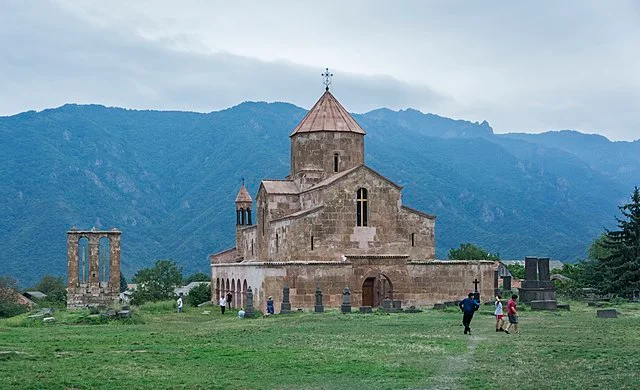
The Odzun Monument dates back to the 7th century AD, a time of widespread Christianization in Armenia. The basilica was constructed under the direction of Catholicos Hovhannes III Odznetsi, one of Armenia’s revered church leaders. Built to serve as a religious and cultural center, the Odzun Monument illustrates the craftsmanship and architectural knowledge of the period. Unlike many Armenian churches, which were later altered or expanded, the Odzun basilica largely retains its original structure and features.
The basilica was built during a time of relative peace in Armenia, allowing the Catholicos to focus on enhancing Christian education and expanding church infrastructure. This period allowed the Armenian Church to reinforce its identity, separate from both Eastern Orthodoxy and the Roman Catholic Church. The construction of Odzun and other monuments during this time reflects Armenia’s efforts to strengthen its distinct Christian faith and architecture.
Architectural Features
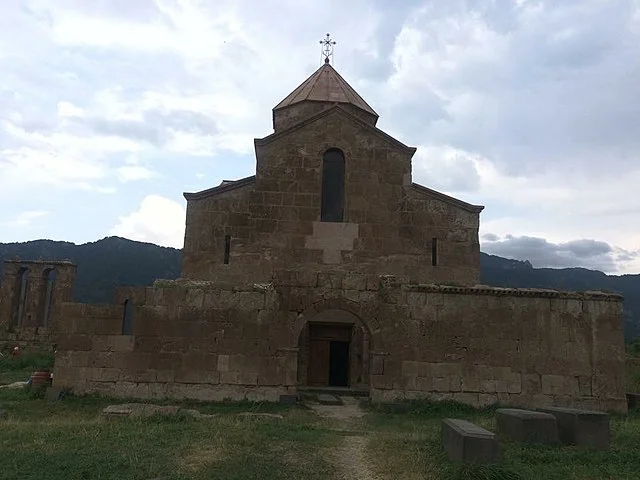
Odzun Monument’s architectural style is unique among Armenian basilicas. The basilica is built in a three-nave design, a typical early Christian layout, which features a rectangular plan with three aisles. Its vaulted ceilings and high arches are notable, demonstrating the engineering skill of the time. The basilica was constructed using pinkish stone sourced from local quarries, which gives the structure a distinct appearance against the surrounding landscape.
A notable feature of the Odzun basilica is its impressive central dome, which rises above the roofline. The dome is supported by pendentives, allowing for a smooth transition from the rectangular nave below to the circular dome above. This architectural technique reflects the influence of Byzantine designs, highlighting cross-cultural exchanges that shaped early Armenian Christian architecture.
Another distinctive feature of the Odzun Monument is the double-arched funerary monument located just outside the basilica. This structure, sometimes referred to as a “gavit,” or narthex, is thought to have been built to commemorate a significant event or to honor a notable individual. The monument’s columns are decorated with reliefs depicting early Christian iconography, including the life of Christ and scenes from the Bible. These carvings serve as one of the earliest forms of Christian art in Armenia, making Odzun a vital piece of Armenia’s cultural heritage.
Interior Design and Decorations
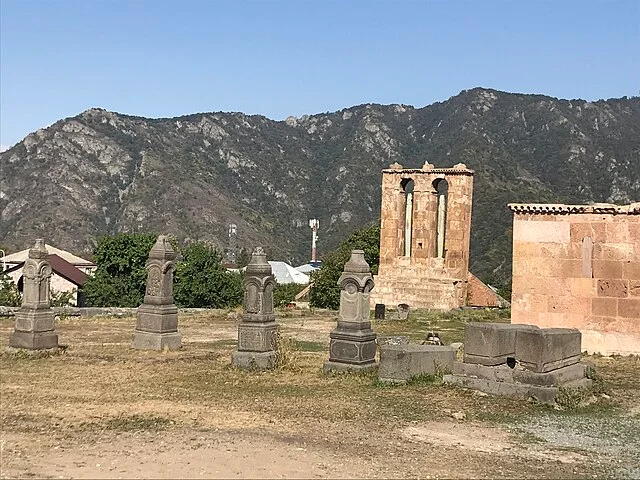
The interior of the Odzun basilica is relatively austere, reflecting the simplicity valued in early Christian worship. However, it includes several unique elements that add historical depth. For instance, the interior walls are adorned with carvings and inscriptions. The central nave is separated from the side aisles by thick columns, creating an open space that enhances acoustics within the basilica. The altar, set slightly elevated, provides a focal point for worshipers and is aligned with traditional Christian orientations.
One of the most remarkable aspects of the Odzun Monument’s interior is its early Christian relief carvings. These carvings feature symbols such as crosses, doves, and grapevines, which were common Christian motifs. While some decorations have eroded over time, they offer valuable insight into early Armenian Christian art and symbolism.
Significance of the Odzun Monument
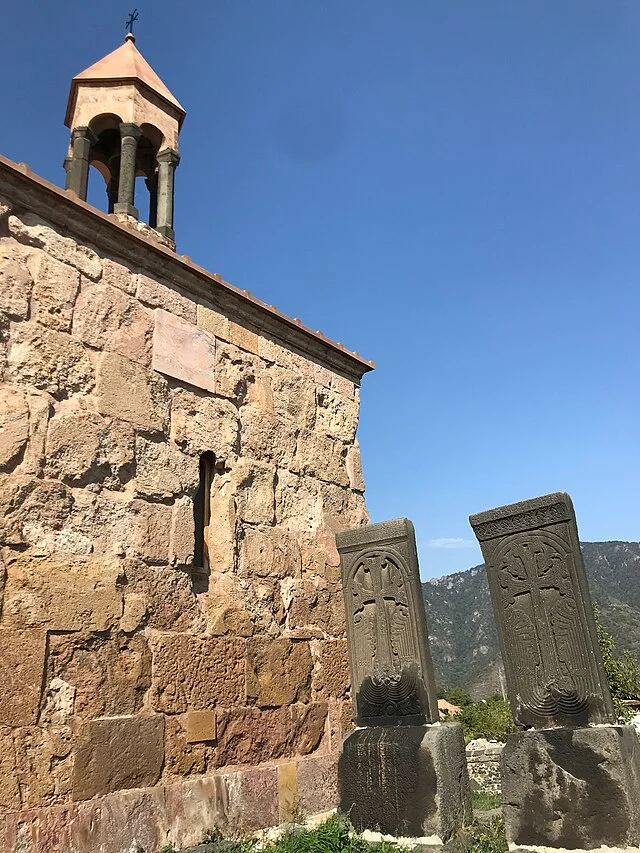
The Odzun Monument holds historical, religious, and architectural significance. As one of Armenia’s oldest standing churches, it provides a unique example of early Armenian church design and construction techniques. The basilica represents a crucial era in Armenian history when Christianity took root and defined the region’s cultural and religious identity.
The site has also gained attention due to its cultural value, which is reflected in its religious relics and early Christian iconography. The carved reliefs are some of Armenia’s oldest Christian symbols, making the Odzun Monument an essential resource for studying the spread of Christianity in the region. Moreover, its well-preserved state allows researchers to understand Armenian church design without the modifications seen in other ancient churches.
Preservation Efforts
Efforts to preserve the Odzun Monument have been ongoing, with periodic restorations to stabilize the structure and protect it from environmental damage. Armenia’s National Heritage Program has prioritized the site, focusing on preserving the intricate carvings and structural integrity of the basilica. The preservation of the Odzun Monument not only safeguards Armenia’s historical legacy but also contributes to global understanding of early Christian architecture.
Visiting the Odzun Monument Today

Today, the Odzun Monument remains a popular destination for both historians and tourists. The basilica’s rural location in the Lori Province offers visitors an opportunity to experience Armenia’s natural beauty while exploring a critical piece of the nation’s cultural heritage. Visitors can observe the basilica’s unique architecture, the funerary monument, and the interior carvings that convey the deep-rooted Christian traditions of Armenia.
The Odzun Monument stands as a testament to the resilience and faith of the Armenian people and serves as a focal point for understanding Armenia’s early Christian history.
Source:

